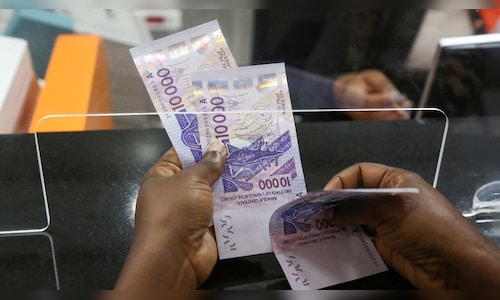Source: site

The World Bank’s latest Global Findex 2025 Report has revealed unprecedented progress in financial inclusion, particularly in low and middle-income countries. However, a significant number of adults especially women, the poor, and the digitally disconnected, continue to be excluded from the formal financial system.
“Worldwide, 79% of adults have an account at a bank or similar financial institution, with a mobile money provider, or both, up from 74% in 2021. Ownership of financial accounts increased globally by 5 percentage points between 2021 and 2024 and by 6 percentage points in low- and middle-income economies, in which 75% of adults now have an account,” the latest Findex report said.
The report is based on surveys of over 145,000 adults across 141 economies conducted during the calendar year 2024.
“More adults than ever in low- and middle-income countries now have bank or other financial accounts, leading to a rise in formal saving, according to the report. This momentum in financial inclusion is creating new economic opportunities. Mobile-phone technology played a key role in the surge, with 10% of adults in developing economies using a mobile-money account to save — a 5 percentage point increase from 2021,” the World Bank said.
As a result of increase in the number of adults owning financial account in low and middle-income economies (LMIEs), there’s been a surge in formal savings. In 2024, 40% of adults in developing economies saved in a financial account, which is a 16 percentage points increase since 2021 and the fastest rise recorded in over a decade. Sub-Saharan Africa saw particularly strong growth, with formal savings increasing by 12 percentage points to reach 35% of adults.
“Financial inclusion has the potential to improve lives and transform entire economies,” said World Bank Group President Ajay Banga. “Digital finance can convert this potential into reality, but several ingredients need to be in place. At the World Bank Group, we’re working on all of them. We’re helping countries get their people access to new or improved digital IDs. We’re constructing social protection programs with digital cash-transfer systems that deliver resources directly to those in need. We’re modernising payment systems and helping to remove regulatory roadblocks—so that people and businesses have the financing they need to innovate and create jobs.”
Unbanked population
Despite this progress, 1.3 billion adults still remain outside the formal financial system and over half of them – 650 million – are concentrated in just eight countries: Bangladesh, China, Egypt, India, Indonesia, Mexico, Nigeria, and Pakistan.
Of the total, women constitute a major chunk (55%) of the unbanked population, meanwhile 52% people without bank accounts are from the poorest 40% of households, and 62% of them have only primary education. Also, unemployment is a major factor among the unbanked population as 54% them are either unemployed or out of the labour force.
However, digital technology presents a potential pathway for expanding access. Of those without accounts, around 900 million own a mobile phone, and more than half of them, about 530 million, have smartphones. The report highlights the role that real-time digital payment systems, such as India’s Unified Payments Interface (UPI) and Brazil’s PIX, could play in closing the financial access gap by enabling low-cost, instant transactions.
“The impact that mobile phones and the internet are having extends not only to account ownership, but also to potentially productive uses, including saving formally, which 40% of adults in low and middle-income economies now do, and making or receiving digital payments, which more than 60 percent of adults in low and middle-income economies also do,” said the World Bank.
Bill Gates, Chair of the Gates Foundation, one of the supporters of the Global Findex, said: “More people than ever have the financial tools to invest in their futures and build economic resilience, including women and others previously left behind. This is real progress. The case for investing in inclusive financial systems, digital public infrastructure, and connectivity is clear—it’s a proven path to unlocking opportunity for everyone.”
Mobile money continues to be a pivotal force in driving inclusion, particularly in regions like Sub-Saharan Africa. The report found that since 2014, mobile money, whether used alone or alongside a traditional bank account, has been central to global gains in account ownership. Today, 15% of adults globally have a mobile money account.
Digital money is also helping to narrow the gender gap in account ownership. Globally, over two-thirds (77%) of women now have accounts compared to 81% of men. In LMIEs, women’s account ownership nearly doubled over the past decade, rising from 37% in 2011 to 73% in 2024, as per the report.
Regional variations
The regional breakdown of the data reveals interesting contrasts. The Middle East and North Africa saw account ownership rise to 53% from 45% in 2021, while formal saving climbed to 17%. In South Asia, nearly 80% of adults now have accounts, with India leading the way as 90% of both men and women in India are account holders, and 65% own a mobile phone.
Sub-Saharan Africa experienced a significant increase in financial access, with account ownership growing to 58% from 49% in 2021. It remains the global leader in mobile money usage.
Nonetheless, key digital and demographic disparities remain. Only nine LMIEs reported mobile phone ownership below 65%. Phone ownership is significantly lower among those with less education—75% among adults with primary education or less, compared to 93% among those with secondary education or more.
Women are nine percentage points less likely than men to own a phone, and poorer adults are eight points behind wealthier counterparts. More than 300 million women in South Asia still lack mobile phones. Affordability continues to be the most frequently cited reason for not owning a phone.



